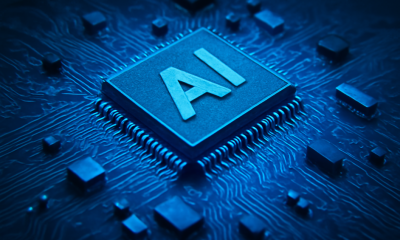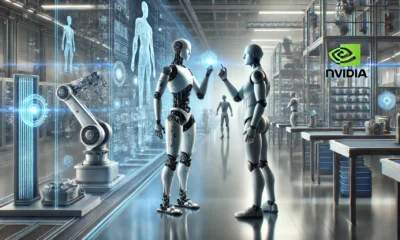Artificial Intelligence
Nvidia’s H200 GPU is a Milestone in AI Technology

In a significant leap forward for artificial intelligence and computing, Nvidia has unveiled the H200 GPU, marking a new era in the field of generative AI. This cutting-edge graphics processing unit emerges as an upgrade to its predecessor, the H100, which notably played a pivotal role in training OpenAI's advanced large language model, GPT-4. The introduction of the H200 GPU is not just a technological advancement; it's a catalyst in the booming AI industry, addressing the soaring demands of big companies, startups, and government agencies alike.
The H200's debut comes at a time when the world is witnessing unprecedented growth in AI capabilities, stretching the boundaries of what machines can learn and accomplish. With its enhanced features and capabilities, the H200 stands as a testament to Nvidia's commitment to pushing the frontiers of AI technology. Its impact extends beyond the realms of machine learning and AI, poised to redefine the landscape of computational power and efficiency in a rapidly evolving digital world.
As we delve deeper into the specifics of the H200, its technical prowess, and the implications for the AI sector and broader tech community, it's clear that Nvidia is not just responding to the current demands but also shaping the future of AI development.

Image: Nvidia
The Evolution of Nvidia's GPUs
The journey from Nvidia's H100 to the newly announced H200 GPU encapsulates a narrative of relentless innovation and technological advancement. The H100, a robust and powerful GPU in its own right, has been instrumental in some of the most significant AI breakthroughs in recent times, including the training of OpenAI's GPT-4, a large language model known for its sophisticated capabilities. This chip, estimated to cost between $25,000 and $40,000, has been at the heart of AI development across various sectors, powering the creation of models that require thousands of GPUs working in tandem during the training process.
However, the leap to the H200 signifies a substantial upgrade in terms of power, efficiency, and capabilities. The H200 isn't just an incremental improvement; it's a transformative shift that amplifies the potential of AI models. One of the standout enhancements in the H200 is its 141GB of next-generation “HBM3” memory, designed to significantly boost the chip's performance in “inference” tasks. Inference, the phase where a trained model generates text, images, or predictions, is crucial for the practical application of AI, and the H200's advancements directly cater to this need.
The importance of such a development cannot be understated. As AI models become increasingly complex and data-intensive, the demand for more powerful and efficient GPUs has skyrocketed. The H200, with its enhanced memory and capability to generate output nearly twice as fast as the H100, as demonstrated in tests using Meta's Llama 2 LLM, represents a critical step in meeting these escalating demands.
Moreover, the H200's arrival has been met with immense anticipation and excitement, not just within the tech and AI communities but also in the broader market.

Image: Nvidia
Financial Impact and Market Reception
The launch of Nvidia's H200 GPU has had a significant impact on the company's financial standing and market perception. This new development has supercharged Nvidia's stock, reflecting a surge of more than 230% in 2023. Such a robust performance is indicative of the market's confidence in Nvidia's AI technology and its potential. The company's fiscal projections for its third quarter, anticipating around $16 billion in revenue—a staggering 170% increase from the previous year—underscore the financial implications of their advancements in AI GPUs.
This financial upswing is a direct consequence of the heightened interest and demand in the AI sector, especially for powerful GPUs capable of handling advanced AI tasks. The H100's price range already placed it as a high-value asset in the AI market. The H200, with its enhanced capabilities, is set to further this trend, appealing to a wide range of customers from big tech companies to government agencies, all seeking to leverage the power of AI.
Moreover, the introduction of the H200 GPU brings Nvidia into a competitive stance with other industry players, most notably AMD with its MI300X GPU. The competition is not just about raw power or memory capacity but also encompasses aspects like energy efficiency, cost-effectiveness, and adaptability to various AI tasks. Nvidia's H200, with its upgraded features and compatibility with previous models, positions the company strongly in this competitive landscape.
This market enthusiasm for Nvidia's AI GPUs isn't just a short-term reaction; it's a reflection of a broader trend in the tech industry towards AI and machine learning. As companies and governments increasingly invest in AI technology, the demand for powerful, efficient GPUs like the H200 is expected to grow, making Nvidia's position in the market even more pivotal.











